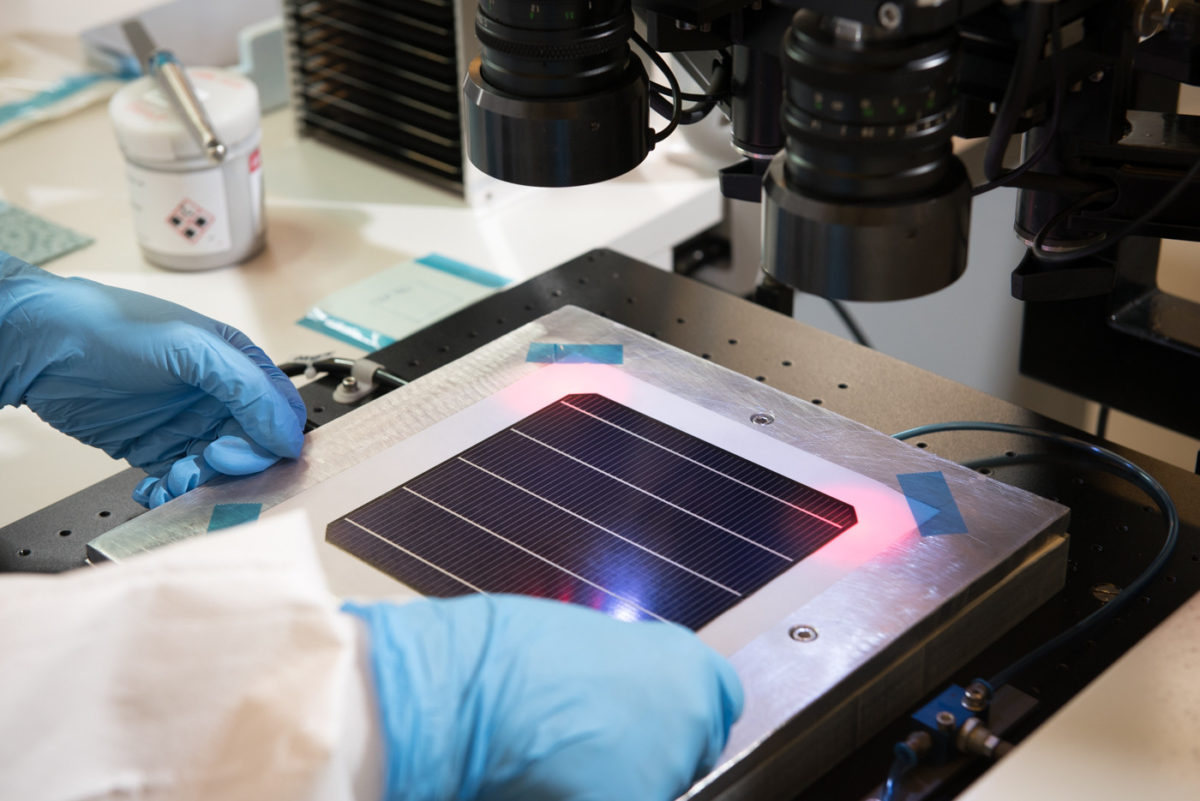Oxford PV has set a new world record efficiency for a large-sized perovskite-silicon tandem cell, at 28.6%, a measurement confirmed by Germany's Fraunhofer ISE. The overall record for perovskite-silicon tandem cell efficiency is currently held by Stefaan De Wolf's group at King Abdullah University of Science and Technology in Saudi Arabia, which achieved 33.2% on a device measuring 1cm².
Translating high efficiencies to larger device sizes, produced using industrially compatible techniques is a key step in the commercialization of this technology. “Our latest efficiency achievement of 28.6% is more than 1.5% above our record set last year and exceeds our own roadmap plan of 1% annual increases,” said Chris Case, Chief Technology Officer, Oxford PV.
Oxford PV, founded in 2010 as a spinoff of Oxford University, produced the cell at its integrated production line in Brandenburg an der Havel, Germany, the same line where its 27% efficiency devices are made, the company said in a statement.
Popular content
According to David Ward, Chief Executive Officer, Oxford PV, the milestone showcases the company’s technology and talent but efforts toward commercialization continue. “While we continue to innovate on our perovskite-on-silicon technology on small research-sized solar cells, much of our focus has been on improving our commercial-sized cells for the market, ramping up production, and working with our solar module partners to prepare them for assembly into solar panels,” says Ward. “Our team has made excellent progress during 2023 and our innovative solar cells are close to being in the hands of our module-manufacturing customers.”
By Valerie Thompson
This content is protected by copyright and may not be reused. If you want to cooperate with us and would like to reuse some of our content, please contact: editors@pv-magazine.com.


15 comments
By submitting this form you agree to pv magazine using your data for the purposes of publishing your comment.
Your personal data will only be disclosed or otherwise transmitted to third parties for the purposes of spam filtering or if this is necessary for technical maintenance of the website. Any other transfer to third parties will not take place unless this is justified on the basis of applicable data protection regulations or if pv magazine is legally obliged to do so.
You may revoke this consent at any time with effect for the future, in which case your personal data will be deleted immediately. Otherwise, your data will be deleted if pv magazine has processed your request or the purpose of data storage is fulfilled.
Further information on data privacy can be found in our Data Protection Policy.